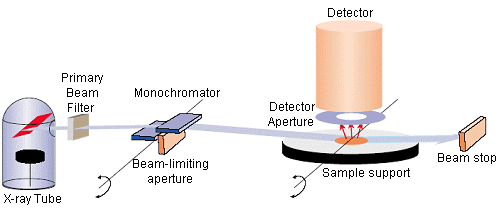

ICENS operates two very powerful complementary nuclear techniques, Neutron Activation Analysis and X-Ray Fluorescence which provide enormous analytical power for a wide range of elements.
Neutron Activation Analysis
Neutron Activation Analysis (NAA) is the flagship analytical method of ICENS. It is probably the most powerful of elemental analytical techniques, and is an important reference method against which other techniques are frequently compared. Analyses are usually done without chemical pre-treatment of the sample, thus avoiding problems related to incomplete dissolution, for example of soils and rocks; loss of volatile; potential combination; and additional expense. Moreover, since neutrons interact directly with the atomic nuclei, the state of chemical combination is not relevant. Theoretically, some 70% of the 88 naturally occurring elements can be determined by NAA.
SLOWPOKE has five available irradiation sites. The neutron flux around the core is radially homogeneous, with less than a 1% difference between the four inner sites. A pneumatic system is used for sample transfer to and from the reactor core. Irradiation times range from seconds to hours depending on the half-lives of the radionuclide involved.
An in-pool irradiation system has been developed for samples up to about 20g. The increased sample size compensates for the 90% reduction in neutron flux and can be advantageous, when as with the analysis of gold, there may be a strong nugget effect and as a result larger samples are desired. ICENS presently routinely measures the concentrations of about 54 elements at parts per million (ppm) or parts per billion (ppb) limits of detection, depending on the element and sample matrix. The limits could be reduced even further in post-irradiation separation techniques were utilized, which currently are not carried out.
The induced gamma radioactivity is measured with one of four high resolution gamma spectroscopy systems using solid-state germanium detectors. Two systems are dedicated to short-lived radionuclide; the other two, are connected to automated sample changers, for unattended counting over longer periods.
 SLOWPOKE is a tiny nuclear reactor. It was designed by Dr. John Hilborn at the Chalk River Nuclear Laboratory of Atomic Energy of Canada Limited (AECL), specifically for use in universities, hospitals and research institutions. It is a tank in pool reactor i.e. the core is inside a sealed tank containing extremely pure water, which acts both as moderator (slows the fission neutrons for improved fission efficiency) and coolant for heat transfer to the outer pool. The pool is 6.4 m deep, 2.4 m in diameter and 0.3 m thick. It is constructed of specially reinforced waterproof concrete covered with mastic asphalt on the outside, and epoxy resin on the inside. The concrete is separated from the surrounding earth by 0.91 m of packed sand. The pool contains continuously cooled and purified water to a depth of 5.1 meters, for both heat transfer and biological shielding. The maximum rated thermal power output is only 20 kilowatts. The reactor core consists of an assembly of 296 fuel pins. A 100-mm thick beryllium annulus encases the 23 by 25 cm fuel cage. This, together with a 50mm beryllium disc at the bottom of the core, is the main neutron reflector. The core container is sealed and no internal adjustments are allowed. Long term changes in performance due to fuel burn-up and poison build-up are corrected for by adding top semi-circular beryllium reflector shims, each only a few millimetres thick, to allow very occasional adjustments with usage.
SLOWPOKE is a tiny nuclear reactor. It was designed by Dr. John Hilborn at the Chalk River Nuclear Laboratory of Atomic Energy of Canada Limited (AECL), specifically for use in universities, hospitals and research institutions. It is a tank in pool reactor i.e. the core is inside a sealed tank containing extremely pure water, which acts both as moderator (slows the fission neutrons for improved fission efficiency) and coolant for heat transfer to the outer pool. The pool is 6.4 m deep, 2.4 m in diameter and 0.3 m thick. It is constructed of specially reinforced waterproof concrete covered with mastic asphalt on the outside, and epoxy resin on the inside. The concrete is separated from the surrounding earth by 0.91 m of packed sand. The pool contains continuously cooled and purified water to a depth of 5.1 meters, for both heat transfer and biological shielding. The maximum rated thermal power output is only 20 kilowatts. The reactor core consists of an assembly of 296 fuel pins. A 100-mm thick beryllium annulus encases the 23 by 25 cm fuel cage. This, together with a 50mm beryllium disc at the bottom of the core, is the main neutron reflector. The core container is sealed and no internal adjustments are allowed. Long term changes in performance due to fuel burn-up and poison build-up are corrected for by adding top semi-circular beryllium reflector shims, each only a few millimetres thick, to allow very occasional adjustments with usage.
Main principle The main principle of X-Ray Fluorescence Spectros-copy (XRF) is based on the fact, that atoms, when irradiated with X-Rays, radiate secondary X-Rays –the Fluorescence radiation. On this basis XRF-analysis is possible because: The Wavelength and energy of the Fluorescence radiation is specific for each element The concentration of each element can be calculated using the intensity of the Fluorescence radiation

